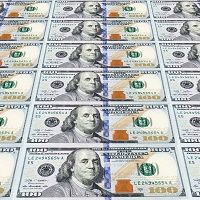- Revenue Cycle Management
- COVID-19
- Reimbursement
- Diabetes Awareness Month
- Risk Management
- Patient Retention
- Staffing
- Medical Economics® 100th Anniversary
- Coding and documentation
- Business of Endocrinology
- Telehealth
- Physicians Financial News
- Cybersecurity
- Cardiovascular Clinical Consult
- Locum Tenens, brought to you by LocumLife®
- Weight Management
- Business of Women's Health
- Practice Efficiency
- Finance and Wealth
- EHRs
- Remote Patient Monitoring
- Sponsored Webinars
- Medical Technology
- Billing and collections
- Acute Pain Management
- Exclusive Content
- Value-based Care
- Business of Pediatrics
- Concierge Medicine 2.0 by Castle Connolly Private Health Partners
- Practice Growth
- Concierge Medicine
- Business of Cardiology
- Implementing the Topcon Ocular Telehealth Platform
- Malpractice
- Influenza
- Sexual Health
- Chronic Conditions
- Technology
- Legal and Policy
- Money
- Opinion
- Vaccines
- Practice Management
- Patient Relations
- Careers
Student Loans and Student Choice
With Match Day just around the corner, the issues of student debt and evolving career patterns are coming to the fore.

With Match Day just around the corner on March 18th, several issues are coming to the fore.
Undergraduate student loan burden is the highest it has ever been.
Among the 11% of graduate degree recipients with $120,000 or more in student loan debt,
. More and more medical students are graduating yet the number of residency slots remains relatively static. Foreign medical students have a low chance of matching compared to US graduates.
80% of all education debt was associated with graduate study.Medical student debt averages about $170,000
All of this is happening against a background of a small but increasing number of medical students opting to forgo residency training to work in startups or create their own companies. Some have taken on additional loans to get graduate degrees in business as part of combined MD/MBA programs, which are presently offered by the majority of US medical schools.
In the meantime, taxpayers are footing the bill and
the student loan default rate can be as high as 22%.
Do medical students who take federally subsidized student loans have an obligation to become clinical doctors, since, without a residency, making enough to pay off the loans is slim and the odds of striking it rich as an entrepreneur is even slimmer? It becomes more of a moral question than a practical one since it would be almost impossible to enforce and no one can reliably force someone else to go into a given career.
However, there are ways to exact pain on those who don't choose a clinical career or prevent them from adding to tax subsidized loans. The debt burden might eventually be a consideration when it comes time to fund the startup.
Student debt and the cost of higher education has reached the level of presidential politics and we'll be hearing about it until November.
Ultimately, students will choose and suffer the consequences or reap the benefits of their decisions. So will the taxpayers who supported them.
